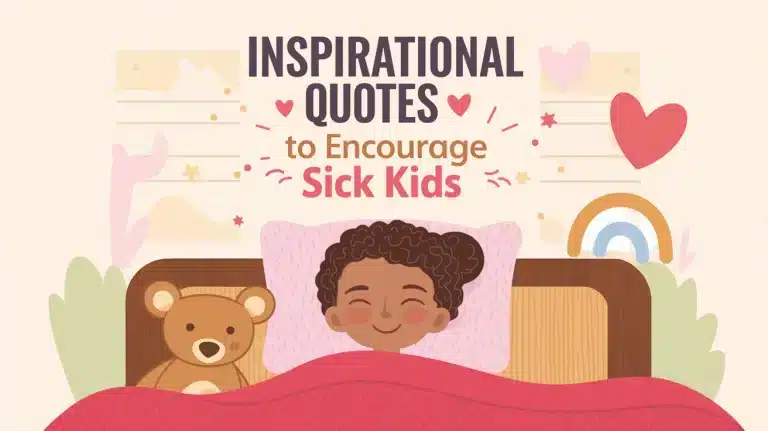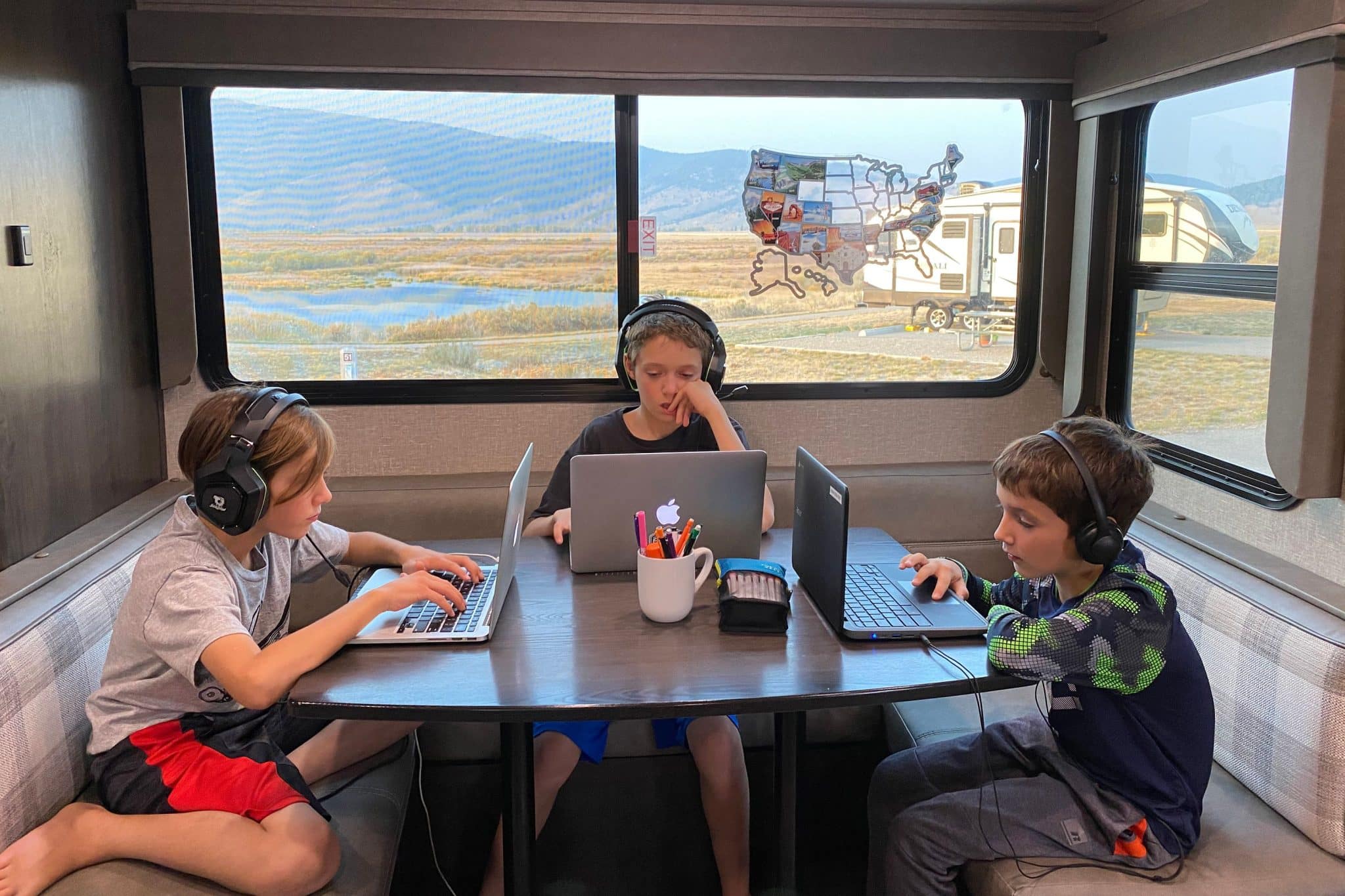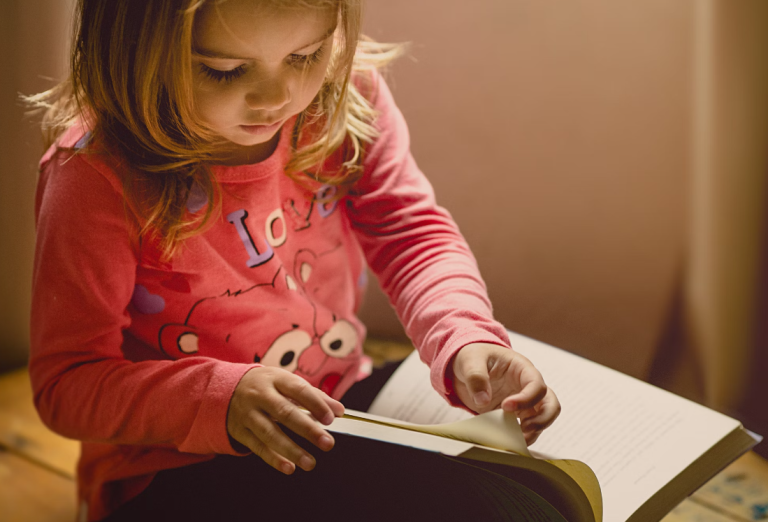Finding the perfect middle name for your baby girl, Olivia, can be a significant challenge. Many parents want a name combination that flows well, has meaning, and creates a lasting impression for their daughter’s future.
We’re here to simplify this naming process with carefully selected options that complement Olivia’s classic beauty.
This guide offers various middle name styles, from classic favorites to modern choices, allowing you to find the ideal pairing that resonates with your family.
In the following sections, you’ll find middle names sorted by style, meaning, and sound, helping you create the perfect full name for your little Olivia.
Why is Olivia a Beautiful First Name?
Olivia has remained beloved across generations since its appearance in Shakespeare’s “Twelfth Night,” giving it the literary depth many parents value.
Though consistently ranked among top baby names, Olivia never feels overused—each child still maintains her unique identity with this name.
The name’s true strength lies in its versatility. With flowing vowels that sound gentle yet four syllables ending strongly, Olivia suits all personalities from quiet and thoughtful to bold and outgoing.
Perhaps most importantly, the name ages wonderfully, fitting a small child, professional adult, or elderly person with equal grace—ensuring your daughter’s name will suit her throughout life.
Popular & Timeless Middle Names
1. Grace
Origin – Latin
Pronunciation – grayss
Meaning – Charm, goodness, and generosity
2. Rose
Origin – Latin
Pronunciation – rohz
Meaning – A flower symbolizing love and beauty
3. Marie
Origin – French
Pronunciation – muh-ree
Meaning – Beloved or wished-for child
4. Jane
Origin – Hebrew
Pronunciation – jayn
Meaning – God is gracious
5. Claire
Origin – French/Latin
Pronunciation – klair
Meaning – Clear or bright
6. Anne
Origin – Hebrew
Pronunciation – an
Meaning – Grace or favor
7. Elizabeth
Origin – Hebrew
Pronunciation – ih-liz-uh-beth
Meaning – God is my oath
8. Louise
Origin – French/German
Pronunciation – loo-eez
Meaning – Famous warrior
9. Catherine
Origin – Greek
Pronunciation – kath-er-in
Meaning – Pure
10. Victoria
Origin – Latin
Pronunciation – vik-TOR-ee-uh
Meaning – Victory
11. Nicole
Origin – Greek
Pronunciation – nih-kohl
Meaning – People of victory
12. Margaret
Origin – Greek
Pronunciation – mar-grit
Meaning – Pearl
13. Charlotte
Origin – French
Pronunciation – shar-luht
Meaning – Free woman
14. Frances
Origin – Latin
Pronunciation – fran-sis
Meaning – From France or free one
15. Eleanor
Origin – Greek
Pronunciation – el-uh-nor
Meaning – Shining light
16. Madeline
Origin – Hebrew/French
Pronunciation – mad-uh-line
Meaning – Woman from Magdala
17. Katherine
Origin – Greek
Pronunciation – kath-er-in
Meaning – Pure
18. Josephine
Origin – Hebrew
Pronunciation – jo-seh-feen
Meaning – God will increase
19. Caroline
Origin – French
Pronunciation – ka-ro-line
Meaning – Free or strong
20. Elise
Origin – French
Pronunciation – eh-lees
Meaning – God is my oath
21. Sophia
Origin – Greek
Pronunciation – so-fee-uh
Meaning – Wisdom
22. Abigail
Origin – Hebrew
Pronunciation – ab-ih-gayl
Meaning – Father’s joy
23. Isabel
Origin – Spanish
Pronunciation – iz-uh-bell
Meaning – Pledged to God
24. Rebecca
Origin – Hebrew
Pronunciation – ruh-bek-uh
Meaning – To bind or tie
25. Danielle
Origin – Hebrew
Pronunciation – dan-yell
Meaning – God is my judge
26. Christine
Origin – Greek
Pronunciation – kris-teen
Meaning – Follower of Christ
27. Alexandra
Origin – Greek
Pronunciation – al-ex-an-druh
Meaning – Defender of mankind
28. Julia
Origin – Latin
Pronunciation – joo-lee-uh
Meaning – Youthful
29. Natalie
Origin – Latin
Pronunciation – nat-uh-lee
Meaning – Born on Christmas
30. Alice
Origin – German
Pronunciation – al-iss
Meaning – Noble
31. Amelia
Origin – German
Pronunciation – uh-mee-lee-uh
Meaning – Work, industrious
32. Emily
Origin – Latin
Pronunciation – em-uh-lee
Meaning – Rival or eager
33. Sarah
Origin – Hebrew
Pronunciation – sair-uh
Meaning – Princess
34. Hannah
Origin – Hebrew
Pronunciation – han-uh
Meaning – Grace or favor
35. Michelle
Origin – Hebrew/French
Pronunciation – mih-shel
Meaning – Who is like God
36. Genevieve
Origin – French
Pronunciation – jen-uh-veev
Meaning – Tribe woman
37. Isabelle
Origin – French
Pronunciation – iz-uh-bell
Meaning – Devoted to God
38. Juliette
Origin – French
Pronunciation – joo-lee-ett
Meaning – Youthful
39. Evelyn
Origin – English
Pronunciation – ev-uh-lin
Meaning – Wished-for child
40. Lillian
Origin – Latin
Pronunciation – lil-ee-an
Meaning – Lily flower
41. Audrey
Origin – English
Pronunciation – aw-dree
Meaning – Noble strength
42. Camille
Origin – French
Pronunciation – ka-meel
Meaning – Attendant of a temple
43. Vivian
Origin – Latin
Pronunciation – viv-ee-an
Meaning – Alive
44. Rachel
Origin – Hebrew
Pronunciation – ray-chel
Meaning – Ewe or gentle
45. Diana
Origin – Latin
Pronunciation – dy-an-uh
Meaning – Divine
46. Ruth
Origin – Hebrew
Pronunciation – rooth
Meaning – Compassionate friend
47. Faith
Origin – English
Pronunciation – fayth
Meaning – Trust or belief
48. Noelle
Origin – French
Pronunciation – noh-ell
Meaning – Christmas
49. Patricia
Origin – Latin
Pronunciation – puh-trish-uh
Meaning – Noble
50. Lucille
Origin – French
Pronunciation – loo-seel
Meaning – Light
Trendy & Modern Middle Names
51. Wren
Origin – English
Pronunciation – ren
Meaning – Small bird
52. Skye
Origin – Scottish
Pronunciation – sky
Meaning – From the Isle of Skye
53. Jade
Origin – Spanish
Pronunciation – jayd
Meaning – Precious green stone
54. Quinn
Origin – Irish
Pronunciation – kwin
Meaning – Wise or intelligent
55. Blake
Origin – English
Pronunciation – blayk
Meaning – Fair-haired or dark
56. Harper
Origin – English
Pronunciation – har-per
Meaning – Harp player
57. Piper
Origin – English
Pronunciation – pie-per
Meaning – Flute or pipe player
58. Sloane
Origin – Irish
Pronunciation – sloh-n
Meaning – Raider or warrior
59. Sage
Origin – Latin
Pronunciation – sayj
Meaning – Wise and healthy
60. Zoe
Origin – Greek
Pronunciation – zoh-ee
Meaning – Life
61. Riley
Origin – Irish
Pronunciation – rye-lee
Meaning – Courageous or valiant
62. Reagan
Origin – Irish
Pronunciation – ray-gun
Meaning – Little ruler
63. London
Origin – English
Pronunciation – lun-dun
Meaning – From the great river
64. Harlow
Origin – English
Pronunciation – har-loh
Meaning – Army hill
65. Finley
Origin – Scottish
Pronunciation – fin-lee
Meaning – Fair warrior
66. Parker
Origin – English
Pronunciation – par-ker
Meaning – Park keeper
67. Avery
Origin – English
Pronunciation – ay-vree
Meaning – Ruler of the elves
68. Rowan
Origin – Irish
Pronunciation – roh-an
Meaning – Little red one
69. Nova
Origin – Latin
Pronunciation – noh-vuh
Meaning – New or star that shines brightly
70. Eden
Origin – Hebrew
Pronunciation – ee-den
Meaning – Delight or paradise
71. Monroe
Origin – Scottish
Pronunciation – mun-roh
Meaning – From the mouth of the river
72. Phoenix
Origin – Greek
Pronunciation – fee-niks
Meaning – Mythical firebird reborn
73. Remi
Origin – French
Pronunciation – reh-mee
Meaning – Oarsman
74. Journey
Origin – English
Pronunciation – jur-nee
Meaning – Trip or adventure
75. Emerson
Origin – English
Pronunciation – em-er-sun
Meaning – Brave or powerful
76. Winter
Origin – English
Pronunciation – win-ter
Meaning – The cold season
77. Marlowe
Origin – English
Pronunciation – mar-loh
Meaning – Driftwood or remnants of a lake
78. Auden
Origin – English
Pronunciation – aw-den
Meaning – Old friend
79. Briar
Origin – English
Pronunciation – bry-er
Meaning – Thorny shrub
80. Sutton
Origin – English
Pronunciation – sut-ton
Meaning – From the southern homestead
81. Shay
Origin – Irish
Pronunciation – shay
Meaning – Stately or noble
82. Blair
Origin – Scottish
Pronunciation – blair
Meaning – Field or plain
83. Lennox
Origin – Scottish
Pronunciation – len-ox
Meaning – Elm grove
84. Peyton
Origin – English
Pronunciation – pay-ton
Meaning – Fighting man’s estate
85. Scout
Origin – English
Pronunciation – skowt
Meaning – Explorer or observer
86. River
Origin – English
Pronunciation – rih-ver
Meaning – Flowing water body
87. Rhys
Origin – Welsh
Pronunciation – rees
Meaning – Enthusiasm
88. Reese
Origin – Welsh
Pronunciation – rees
Meaning – Ardent or fiery
89. Greer
Origin – Scottish
Pronunciation – greer
Meaning – Watchful or alert
90. Collins
Origin – Irish
Pronunciation – kah-linz
Meaning – Young pup or victorious
91. Ainsley
Origin – Scottish
Pronunciation – ains-lee
Meaning – One’s own meadow
92. Brynn
Origin – Welsh
Pronunciation – brin
Meaning – Hill
93. Hadley
Origin – English
Pronunciation – had-lee
Meaning – Heather meadow
94. Kinsley
Origin – English
Pronunciation – kinz-lee
Meaning – King’s meadow
95. Palmer
Origin – English
Pronunciation – pahl-mer
Meaning – Pilgrim or traveler
96. Tatum
Origin – English
Pronunciation – tay-tum
Meaning – Cheerful bringer of joy
97. Nova
Origin – Latin
Pronunciation – noh-vuh
Meaning – Star that suddenly increases in brightness
98. Everly
Origin – English
Pronunciation – ev-er-lee
Meaning – Wild boar in a woodland clearing
99. Saige
Origin – Latin
Pronunciation – sayj
Meaning – Wise
100. Shiloh
Origin – Hebrew
Pronunciation – shy-loh
Meaning – Peace or tranquil
Rare & Unique Middle Names
101. Zephyr
Origin – Greek
Pronunciation – zeff-er
Meaning – West wind
102. Lark
Origin – English
Pronunciation – lahrk
Meaning – Joyful songbird
103. Solene
Origin – French
Pronunciation – soh-lehn
Meaning – Dignified, solemn
104. Ciel
Origin – French
Pronunciation – see-el
Meaning – Sky
105. Vesper
Origin – Latin
Pronunciation – ves-per
Meaning – Evening star
106. Marigold
Origin – English
Pronunciation – mair-ee-gohld
Meaning – Golden flower
107. Seren
Origin – Welsh
Pronunciation – seh-ren
Meaning – Star
108. Valor
Origin – Latin
Pronunciation – val-or
Meaning – Bravery or courage
109. Elowen
Origin – Cornish
Pronunciation – el-oh-wen
Meaning – Elm tree
110. Lyric
Origin – Greek
Pronunciation – lir-ik
Meaning – Songlike or poetic
111. Tansy
Origin – Greek
Pronunciation – tan-zee
Meaning – Immortality
112. Ondine
Origin – Latin
Pronunciation – on-deen
Meaning – Little wave
113. Paz
Origin – Spanish
Pronunciation – pahz
Meaning – Peace
114. Reverie
Origin – French
Pronunciation – rev-uh-ree
Meaning – Daydream
115. Jessamine
Origin – Persian
Pronunciation – jess-uh-meen
Meaning – Jasmine flower
116. Lilac
Origin – Persian
Pronunciation – lye-lack
Meaning – Light purple flower
117. Tempest
Origin – Latin
Pronunciation – tem-pest
Meaning – Storm
118. Fable
Origin – English
Pronunciation – fay-buhl
Meaning – Story with a moral
119. Sonnet
Origin – Italian
Pronunciation – son-it
Meaning – A poetic verse
120. Zora
Origin – Slavic
Pronunciation – zor-uh
Meaning – Dawn
121. Artemis
Origin – Greek
Pronunciation – ar-tuh-mis
Meaning – Goddess of the moon and hunt
122. Meridian
Origin – Latin
Pronunciation – muh-rid-ee-an
Meaning – Midday or highest point
123. Evolet
Origin – Modern
Pronunciation – eh-vo-let
Meaning – Life (popularized by film)
124. Quinlan
Origin – Irish
Pronunciation – kwin-lan
Meaning – Graceful or strong
125. Galatea
Origin – Greek
Pronunciation – gal-uh-tee-uh
Meaning – White as milk
126. Calliope
Origin – Greek
Pronunciation – kuh-ly-uh-pee
Meaning – Beautiful voice
127. Thalia
Origin – Greek
Pronunciation – tha-lee-uh
Meaning – To blossom
128. Evanthe
Origin – Greek
Pronunciation – eh-van-thee
Meaning – Fair flower
129. Helene
Origin – Greek
Pronunciation – heh-leen
Meaning – Shining light
130. Oriana
Origin – Latin
Pronunciation – or-ee-ah-nuh
Meaning – Sunrise or golden
131. Amaryllis
Origin – Greek
Pronunciation – am-uh-ril-is
Meaning – Sparkle or fresh
132. Cerelia
Origin – Latin
Pronunciation – ser-ee-lee-uh
Meaning – Of springtime
133. Forsythia
Origin – Latin
Pronunciation – for-sith-ee-uh
Meaning – Golden bell flower
134. Nephele
Origin – Greek
Pronunciation – neh-feh-lee
Meaning – Cloud
135. Zenith
Origin – Arabic
Pronunciation – zee-nith
Meaning – Highest point
136. Romilly
Origin – French
Pronunciation – rom-uh-lee
Meaning – From the rosemary field
137. Sable
Origin – Slavic
Pronunciation – say-buhl
Meaning – Black or dark
138. Jupiter
Origin – Latin
Pronunciation – joo-pih-ter
Meaning – Father of the gods
139. Coralie
Origin – French
Pronunciation – kor-uh-lee
Meaning – Coral
140. Isolde
Origin – Welsh
Pronunciation – ee-zold
Meaning – Ice ruler
141. Leocadia
Origin – Spanish
Pronunciation – lay-oh-kay-dee-uh
Meaning – Bright or clear
142. Margaux
Origin – French
Pronunciation – mar-go
Meaning – Pearl
143. Nimue
Origin – Arthurian Legend
Pronunciation – nim-oo-ay
Meaning – Lady of the Lake
144. Peregrine
Origin – Latin
Pronunciation – pehr-uh-grin
Meaning – Traveler or pilgrim
145. Sorrel
Origin – French
Pronunciation – sor-uhl
Meaning – Reddish-brown plant
146. Tierney
Origin – Irish
Pronunciation – teer-nee
Meaning – Lord
147. Vespera
Origin – Latin
Pronunciation – ves-per-uh
Meaning – Evening
148. Yvaine
Origin – Scottish
Pronunciation – ee-vain
Meaning – Evening star
149. Zafira
Origin – Arabic
Pronunciation – zah-feer-uh
Meaning – Victorious
150. Wylder
Origin – English
Pronunciation – wile-der
Meaning – Untamed or free spirit
Cute & Short Middle Names
151. May
Origin – English
Pronunciation – may
Meaning – The month of May; youthful
152. Bee
Origin – English
Pronunciation – bee
Meaning – Bright and diligent like the insect
153. Joy
Origin – Latin
Pronunciation – joy
Meaning – Happiness or delight
154. Eve
Origin – Hebrew
Pronunciation – eev
Meaning – Life or living
155. Fay
Origin – English
Pronunciation – fay
Meaning – Fairy or loyalty
156. Kate
Origin – Greek
Pronunciation – kayt
Meaning – Pure
157. Bea
Origin – Latin
Pronunciation – bee
Meaning – Bringer of happiness
158. Ann
Origin – Hebrew
Pronunciation – an
Meaning – Grace or favor
159. Dot
Origin – Greek
Pronunciation – dot
Meaning – Gift of God (short for Dorothy)
160. Rae
Origin – Hebrew
Pronunciation – ray
Meaning – Ewe or protector
161. Lynn
Origin – Welsh
Pronunciation – lin
Meaning – Lake or waterfall
162. Sue
Origin – Hebrew
Pronunciation – soo
Meaning – Lily (short for Susan)
163. Tess
Origin – Greek
Pronunciation – tes
Meaning – To reap or harvest
164. Hope
Origin – English
Pronunciation – hohp
Meaning – A feeling of expectation
165. Mae
Origin – English
Pronunciation – may
Meaning – Month of May or mother
166. Jo
Origin – Hebrew
Pronunciation – joh
Meaning – God is gracious
167. Elle
Origin – French
Pronunciation – el
Meaning – She or feminine
168. Beth
Origin – Hebrew
Pronunciation – beth
Meaning – House or God is my oath
169. Gwen
Origin – Welsh
Pronunciation – gwen
Meaning – Blessed or fair
170. Lu
Origin – Latin
Pronunciation – loo
Meaning – Light (short for Lucy)
171. Bay
Origin – Latin
Pronunciation – bay
Meaning – Berry or seaside inlet
172. Fern
Origin – English
Pronunciation – fern
Meaning – A green leafy plant
173. Kay
Origin – Greek
Pronunciation – kay
Meaning – Pure
174. Nell
Origin – English
Pronunciation – nell
Meaning – Bright or shining light
175. Paz
Origin – Spanish
Pronunciation – pahz
Meaning – Peace
176. Sky
Origin – English
Pronunciation – skye
Meaning – Heaven or atmosphere
177. Tru
Origin – English
Pronunciation – troo
Meaning – Honest or faithful
178. Blue
Origin – English
Pronunciation – bloo
Meaning – Color of the sky or calmness
179. Bree
Origin – Irish
Pronunciation – bree
Meaning – Strength or exalted one
180. Dew
Origin – English
Pronunciation – dyoo
Meaning – Morning moisture
181. Gem
Origin – Latin
Pronunciation – jem
Meaning – Precious stone
182. Ivy
Origin – English
Pronunciation – eye-vee
Meaning – Evergreen climbing plant
183. Lux
Origin – Latin
Pronunciation – luhks
Meaning – Light
184. Nyx
Origin – Greek
Pronunciation – nix
Meaning – Night (goddess of night)
185. Pip
Origin – English
Pronunciation – pip
Meaning – Lover of horses (short for Philip or Pippa)
186. Rue
Origin – English
Pronunciation – roo
Meaning – Regret or herb of grace
187. Star
Origin – English
Pronunciation – stahr
Meaning – Celestial body or fame
188. Wynn
Origin – Welsh
Pronunciation – win
Meaning – Fair or blessed
189. Zen
Origin – Japanese
Pronunciation – zen
Meaning – Meditation or calm
190. Ali
Origin – Arabic
Pronunciation – ah-lee
Meaning – Noble or exalted
191. Bell
Origin – English
Pronunciation – bel
Meaning – Beautiful or a chime
192. Coco
Origin – Spanish
Pronunciation – koh-koh
Meaning – Chocolate bean or playful nickname
193. Drew
Origin – Greek
Pronunciation – droo
Meaning – Strong and manly
194. Flor
Origin – Spanish
Pronunciation – floor
Meaning – Flower
195. Grey
Origin – English
Pronunciation – gray
Meaning – Color between black and white
196. Iris
Origin – Greek
Pronunciation – eye-ris
Meaning – Rainbow or flower
197. June
Origin – Latin
Pronunciation – joon
Meaning – The month or youthful
198. Lila
Origin – Arabic/Hebrew
Pronunciation – lie-luh
Meaning – Night or beauty
199. Mia
Origin – Italian/Scandinavian
Pronunciation – mee-uh
Meaning – Mine or beloved
200. Nova
Origin – Latin
Pronunciation – noh-vuh
Meaning – New or bursting star
Middle Names with Deep Meanings
201. Hope
Origin – English
Pronunciation – hohp
Meaning – Expectation or desire
202. Sage
Origin – Latin
Pronunciation – sayj
Meaning – Wise and judicious
203. True
Origin – English
Pronunciation – troo
Meaning – Genuine, faithful
204. Verity
Origin – Latin
Pronunciation – veh-ri-tee
Meaning – Truth
205. Faith
Origin – English
Pronunciation – fayth
Meaning – Complete trust or belief
206. Constance
Origin – Latin
Pronunciation – kawn-stans
Meaning – Steadfastness or constancy
207. Justice
Origin – Latin
Pronunciation – jus-tiss
Meaning – Fairness and righteousness
208. Felicity
Origin – Latin
Pronunciation – fuh-lis-uh-tee
Meaning – Happiness
209. Serenity
Origin – Latin
Pronunciation – suh-ren-i-tee
Meaning – Calm or peacefulness
210. Clarity
Origin – Latin
Pronunciation – klar-i-tee
Meaning – Clearness or lucidity
211. Mercy
Origin – Latin
Pronunciation – mer-see
Meaning – Compassion or forgiveness
212. Honor
Origin – Latin
Pronunciation – aw-nor
Meaning – Integrity and respect
213. Prudence
Origin – Latin
Pronunciation – proo-denss
Meaning – Wisdom and foresight
214. Amity
Origin – Latin
Pronunciation – am-ih-tee
Meaning – Friendship
215. Blythe
Origin – English
Pronunciation – blyth
Meaning – Joyful and carefree
216. Peace
Origin – English
Pronunciation – pees
Meaning – Tranquility and harmony
217. Beatrix
Origin – Latin
Pronunciation – bee-uh-triks
Meaning – Bringer of joy
218. Clarity
Origin – Latin
Pronunciation – klar-i-tee
Meaning – Transparency or understanding
219. Destiny
Origin – Latin
Pronunciation – dess-tuh-nee
Meaning – Fate or predetermined path
220. Evangeline
Origin – Greek
Pronunciation – eh-van-juh-leen
Meaning – Bringer of good news
221. Fidelity
Origin – Latin
Pronunciation – fih-del-i-tee
Meaning – Loyalty and faithfulness
222. Grace
Origin – Latin
Pronunciation – grayss
Meaning – Divine favor or elegance
223. Harmony
Origin – Greek
Pronunciation – har-muh-nee
Meaning – Agreement and balance
224. Irene
Origin – Greek
Pronunciation – eye-reen
Meaning – Peace
225. Joy
Origin – Latin
Pronunciation – joy
Meaning – Delight or happiness
226. Karma
Origin – Sanskrit
Pronunciation – kar-muh
Meaning – Spiritual cause and effect
227. Liberty
Origin – Latin
Pronunciation – lib-er-tee
Meaning – Freedom or independence
228. Mireille
Origin – French
Pronunciation – mee-ray
Meaning – To admire
229. Naomi
Origin – Hebrew
Pronunciation – nay-oh-mee
Meaning – Pleasantness
230. Patience
Origin – Latin
Pronunciation – pay-shenss
Meaning – Endurance or perseverance
231. Quest
Origin – Latin
Pronunciation – kwest
Meaning – A search or pursuit
232. Revere
Origin – Latin
Pronunciation – ruh-veer
Meaning – To honor deeply
233. Soul
Origin – English
Pronunciation – sohl
Meaning – Essence of being
234. Trinity
Origin – Latin
Pronunciation – trin-i-tee
Meaning – The divine threefold
235. Unity
Origin – Latin
Pronunciation – yoo-ni-tee
Meaning – Oneness or togetherness
236. Valiant
Origin – Latin
Pronunciation – val-ee-uhnt
Meaning – Brave or courageous
237. Wisdom
Origin – English
Pronunciation – wiz-duhm
Meaning – Knowledge and insight
238. Zeal
Origin – Greek
Pronunciation – zeel
Meaning – Passion or enthusiasm
239. Blessing
Origin – English
Pronunciation – bles-ing
Meaning – Divine gift or favor
240. Clarity
Origin – Latin
Pronunciation – klar-i-tee
Meaning – Clearness in thought
241. Divine
Origin – Latin
Pronunciation – dih-vine
Meaning – Heavenly or godly
242. Embrace
Origin – English
Pronunciation – em-brayss
Meaning – To accept or hold close
243. Forever
Origin – English
Pronunciation – for-ev-er
Meaning – Eternal or never-ending
244. Genesis
Origin – Greek
Pronunciation – jen-uh-sis
Meaning – Beginning or origin
245. Heaven
Origin – English
Pronunciation – heh-vin
Meaning – Paradise or divine place
246. Jubilee
Origin – Hebrew
Pronunciation – joo-buh-lee
Meaning – Celebration or joy
247. Legacy
Origin – Latin
Pronunciation – leg-uh-see
Meaning – Inheritance or lasting gift
248. Miracle
Origin – Latin
Pronunciation – meer-uh-kuhl
Meaning – Marvel or wonder
249. Prosper
Origin – Latin
Pronunciation – pros-per
Meaning – To succeed or thrive
250. Rejoice
Origin – Latin
Pronunciation – ree-joyce
Meaning – To feel or express joy
Nature-Inspired Middle Names
251. Rain
Origin – English
Pronunciation – rayn
Meaning – Water that falls from the sky
252. Willow
Origin – English
Pronunciation – wil-oh
Meaning – Graceful tree with slender branches
253. Meadow
Origin – English
Pronunciation – meh-doh
Meaning – Open grassy field
254. Autumn
Origin – Latin
Pronunciation – aw-tuhm
Meaning – The fall season
255. Dawn
Origin – English
Pronunciation – dawn
Meaning – Sunrise or beginning
256. Sky
Origin – English
Pronunciation – skye
Meaning – Heavens or atmosphere
257. Rose
Origin – Latin
Pronunciation – rohz
Meaning – Fragrant flower symbolizing love
258. River
Origin – English
Pronunciation – rih-ver
Meaning – Flowing body of water
259. Ruby
Origin – Latin
Pronunciation – roo-bee
Meaning – Precious red gemstone
260. Jade
Origin – Spanish
Pronunciation – jayd
Meaning – Green ornamental stone
261. Lily
Origin – Latin
Pronunciation – lil-ee
Meaning – A symbol of purity and beauty
262. Wren
Origin – English
Pronunciation – ren
Meaning – Small, melodious bird
263. Hazel
Origin – English
Pronunciation – hay-zuhl
Meaning – Hazelnut tree
264. Sage
Origin – Latin
Pronunciation – sayj
Meaning – Healing herb and wisdom
265. Aurora
Origin – Latin
Pronunciation – aw-roar-uh
Meaning – Goddess of the dawn
266. Amber
Origin – Arabic
Pronunciation – am-ber
Meaning – Fossilized tree resin
267. Cedar
Origin – English
Pronunciation – see-der
Meaning – Evergreen tree
268. Clover
Origin – English
Pronunciation – kloh-ver
Meaning – Lucky plant with three or four leaves
269. Coral
Origin – Latin
Pronunciation – kor-uhl
Meaning – Marine reef-building organism
270. Daisy
Origin – English
Pronunciation – day-zee
Meaning – Fresh, cheerful flower
271. Fern
Origin – Old English
Pronunciation – fern
Meaning – Leafy green plant
272. Ivy
Origin – English
Pronunciation – eye-vee
Meaning – Evergreen climbing plant
273. Juniper
Origin – Latin
Pronunciation – joo-nuh-per
Meaning – Evergreen shrub
274. Laurel
Origin – Latin
Pronunciation – lor-uhl
Meaning – Victory or honor
275. Magnolia
Origin – Latin
Pronunciation – mag-noh-lee-uh
Meaning – Large fragrant flower
276. Maple
Origin – English
Pronunciation – may-puhl
Meaning – Tree with colorful leaves
277. Ocean
Origin – Greek
Pronunciation – oh-shun
Meaning – Vast sea
278. Pearl
Origin – Latin
Pronunciation – purl
Meaning – Lustrous gem from the sea
279. Pine
Origin – Latin
Pronunciation – pyn
Meaning – Evergreen conifer tree
280. Vale
Origin – Latin
Pronunciation – vayl
Meaning – Valley
281. Aspen
Origin – English
Pronunciation – as-pen
Meaning – Tree with fluttering leaves
282. Blossom
Origin – English
Pronunciation – blah-suhm
Meaning – Flower or to bloom
283. Brook
Origin – English
Pronunciation – bruk
Meaning – Small stream
284. Dune
Origin – English
Pronunciation – doon
Meaning – Sand hill near the sea
285. Fleur
Origin – French
Pronunciation – flur
Meaning – Flower
286. Garden
Origin – English
Pronunciation – gar-den
Meaning – Enclosed area of plants
287. Heath
Origin – English
Pronunciation – heeth
Meaning – Open uncultivated land
288. Iris
Origin – Greek
Pronunciation – eye-ris
Meaning – Rainbow or flower
289. Jasmine
Origin – Persian
Pronunciation – jaz-min
Meaning – Fragrant white flower
290. Lake
Origin – English
Pronunciation – layk
Meaning – Large body of water
291. Moss
Origin – English
Pronunciation – maws
Meaning – Soft green plant
292. Opal
Origin – Sanskrit
Pronunciation – oh-puhl
Meaning – Precious stone with iridescence
293. Petal
Origin – Greek
Pronunciation – pet-uhl
Meaning – Part of a flower
294. Quarry
Origin – Latin
Pronunciation – kwor-ee
Meaning – Stone excavation site
295. Reed
Origin – English
Pronunciation – reed
Meaning – Tall grass plant
296. Stone
Origin – English
Pronunciation – stohn
Meaning – Solid mineral substance
297. Terra
Origin – Latin
Pronunciation – tehr-uh
Meaning – Earth or land
298. Violet
Origin – Latin
Pronunciation – vy-uh-let
Meaning – Purple flower
299. Winter
Origin – English
Pronunciation – win-ter
Meaning – Cold season
300. Zinnia
Origin – German
Pronunciation – zin-ee-uh
Meaning – Brightly colored flower
Cultural and Family-Inspired Middle Names
301. Sofia
Origin – Greek
Pronunciation – so-fee-uh
Meaning – Wisdom
302. Aiko
Origin – Japanese
Pronunciation – eye-koh
Meaning – Beloved child
303. Lourdes
Origin – French/Spanish
Pronunciation – lore-des
Meaning – Refers to the Virgin Mary’s shrine in Lourdes, France
304. Mei
Origin – Chinese
Pronunciation – may
Meaning – Beautiful
305. Simone
Origin – Hebrew/French
Pronunciation – see-mohn
Meaning – One who hears
306. Catalina
Origin – Spanish
Pronunciation – cat-uh-lee-nuh
Meaning – Pure
307. Fiona
Origin – Scottish
Pronunciation – fee-oh-nuh
Meaning – Fair or white
308. Gianna
Origin – Italian
Pronunciation – jee-ah-nuh
Meaning – God is gracious
309. Ingrid
Origin – Norse
Pronunciation – in-grid
Meaning – Beautiful or beloved
310. Kira
Origin – Russian/Greek
Pronunciation – keer-uh
Meaning – Throne or sunbeam
311. Leilani
Origin – Hawaiian
Pronunciation – lay-lah-nee
Meaning – Heavenly garland of flowers
312. Maeve
Origin – Irish
Pronunciation – mayv
Meaning – She who intoxicates
313. Nadia
Origin – Slavic
Pronunciation – nah-dee-uh
Meaning – Hope
314. Odette
Origin – French
Pronunciation – oh-det
Meaning – Wealthy or prosperous
315. Priya
Origin – Sanskrit
Pronunciation – pree-yuh
Meaning – Beloved
316. Renata
Origin – Latin
Pronunciation – reh-nah-tuh
Meaning – Reborn
317. Saoirse
Origin – Irish
Pronunciation – seer-sha
Meaning – Freedom
318. Tahlia
Origin – Hebrew
Pronunciation – tah-lee-uh
Meaning – Gentle dew from heaven
319. Valentina
Origin – Latin
Pronunciation – val-en-tee-nuh
Meaning – Strong and healthy
320. Xiomara
Origin – Spanish
Pronunciation – see-oh-mar-uh
Meaning – Glorious battle
321. Yara
Origin – Arabic/Brazilian
Pronunciation – yah-rah
Meaning – Small butterfly or water lady
322. Zara
Origin – Arabic/Hebrew
Pronunciation – zar-uh
Meaning – Princess or blooming flower
323. Adeline
Origin – French
Pronunciation – ad-uh-line
Meaning – Noble
324. Bianca
Origin – Italian
Pronunciation – bee-ahn-ka
Meaning – White or pure
325. Carmen
Origin – Latin/Spanish
Pronunciation – kar-men
Meaning – Song
326. Daria
Origin – Persian
Pronunciation – dar-ee-uh
Meaning – Kingly or wealthy
327. Elena
Origin – Greek/Spanish
Pronunciation – eh-lay-nuh
Meaning – Bright, shining light
328. Francesca
Origin – Italian
Pronunciation – fran-ches-kuh
Meaning – Free one
329. Giselle
Origin – French
Pronunciation – jiz-ell
Meaning – Pledge or hostage
330. Helene
Origin – Greek
Pronunciation – heh-leen
Meaning – Light
331. Ines
Origin – Spanish/Portuguese
Pronunciation – ee-ness
Meaning – Pure or holy
332. Johanna
Origin – Hebrew
Pronunciation – yo-han-uh
Meaning – God is gracious
333. Karla
Origin – German
Pronunciation – kar-luh
Meaning – Free woman
334. Layla
Origin – Arabic
Pronunciation – lay-luh
Meaning – Night
335. Malia
Origin – Hawaiian
Pronunciation – mah-lee-uh
Meaning – Calm and peaceful
336. Neve
Origin – Irish
Pronunciation – neev
Meaning – Bright or radiant
337. Orla
Origin – Irish
Pronunciation – or-luh
Meaning – Golden princess
338. Paloma
Origin – Spanish
Pronunciation – pah-loh-muh
Meaning – Dove or peace
339. Qin
Origin – Chinese
Pronunciation – chin
Meaning – Musical instrument or family name
340. Raisa
Origin – Hebrew/Yiddish
Pronunciation – rye-suh
Meaning – Rose or leader
341. Soraya
Origin – Persian
Pronunciation – soh-rye-uh
Meaning – Princess or star cluster
342. Thea
Origin – Greek
Pronunciation – thay-uh
Meaning – Goddess or divine
343. Uma
Origin – Sanskrit
Pronunciation – oo-muh
Meaning – Tranquility or splendor
344. Vivienne
Origin – French
Pronunciation – viv-ee-en
Meaning – Full of life
345. Wilhelmina
Origin – German
Pronunciation – wil-hel-mee-nuh
Meaning – Determined protector
346. Ximena
Origin – Spanish
Pronunciation – hee-men-uh
Meaning – Listener
347. Yuna
Origin – Korean/Japanese
Pronunciation – yoo-nuh
Meaning – Kindness or moon
348. Zora
Origin – Slavic
Pronunciation – zor-uh
Meaning – Dawn
349. Aziza
Origin – Arabic
Pronunciation – ah-zee-zah
Meaning – Beloved or precious
350. Brielle
Origin – French
Pronunciation – bree-ell
Meaning – God is my strength
Tips for Testing Name Combinations with Your Last Name
Choosing the perfect first and middle name is exciting, but how does it sound with your last name? Here are some simple tips to test name combinations and find the best fit:
- Say it out loud – Repeat “Olivia [middle name] [your last name]” several times to check for natural flow
- Get second opinions – Ask family members to say the full name to hear different perspectives.
- Balance syllables – Pair long last names with shorter middle names and vice versa
- Watch for sound clashes – Some repetition works (like alliteration), but avoid tongue twisters.
- Check the initials – Make sure the monogram doesn’t spell something unintended (like O.M.G.)
Conclusion: One Name, a Lifetime of Meaning
Choosing a middle name for Olivia is more than just selecting pleasant-sounding words—it’s about crafting an identity that will accompany your daughter throughout her life.
The perfect combination will feel right in your heart and sound harmonious to your ears.
Trust your instincts as you make this important decision. The name that consistently brings you joy when you say it aloud is likely the right choice.
If you select a classic pairing like Olivia Jane, a nature-inspired combination like Olivia Sage, or a name that honors your heritage, your thoughtfulness in this process will ensure that your daughter carries a name filled with love and intention.
As your Olivia grows, her full name will become part of her unique story—a gift you’ve given her that connects the past to the future while perfectly capturing who she is in the present.












































